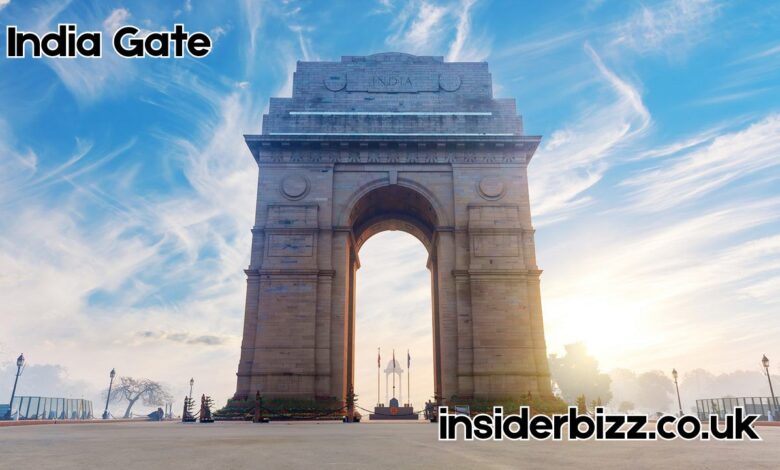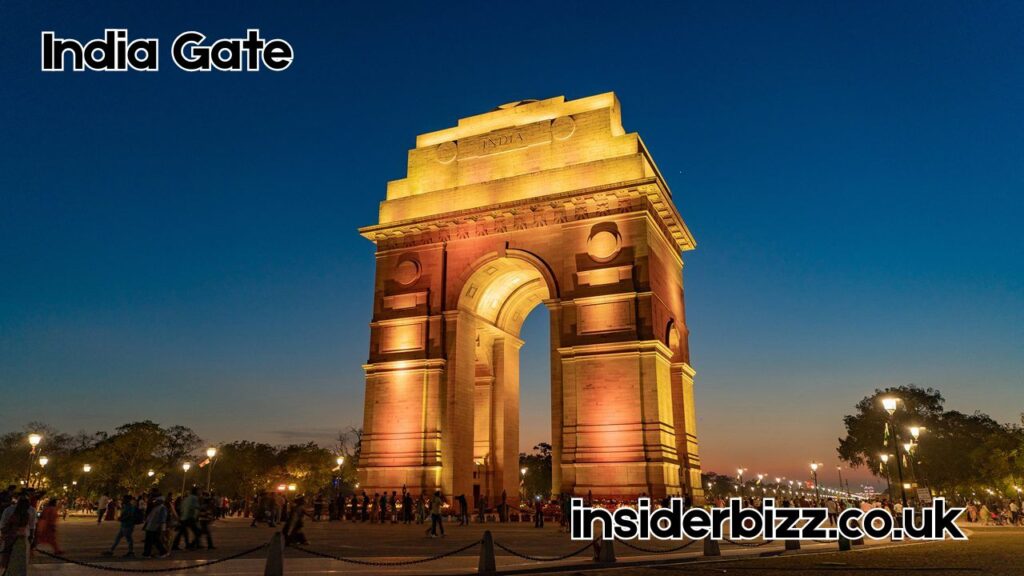
India Gate: A Timeless Monument of National Pride
Introduction to India Gate
The India Gate stands tall in the heart of New Delhi, serving as a symbol of sacrifice, honor, and architectural grandeur. This war memorial has become not only a historic site but also a gathering place for locals and tourists alike. The India Gate is more than just stone and structure—it represents the enduring spirit of a nation.
Historical Background of India Gate

Commissioned in 1921 and completed in 1931, the India Gate was built in honor of the 70,000 Indian soldiers who lost their lives fighting for the British Army in World War I. Designed by Sir Edwin Lutyens, the monument reflects both imperial design elements and classical influences.
The India Gate is inscribed with the names of thousands of soldiers, and its eternal flame—known as Amar Jawan Jyoti—burns in memory of the unknown soldiers who sacrificed their lives for the country.
Architecture and Design of India Gate
Constructed from red and pale sandstone and standing at 42 meters high, the India Gate is a striking example of triumphal arch architecture. It draws parallels to famous monuments such as the Arc de Triomphe in Paris and the Gateway of India in Mumbai.
The wide boulevard that leads to the India Gate enhances its grandeur, while its inscriptions and engravings tell stories of valor and patriotism.
India Gate as a War Memorial
Beyond its architectural beauty, the India Gate functions as a solemn war memorial. Beneath its arch lies the Amar Jawan Jyoti, which was added after the 1971 India-Pakistan war. This flame has been burning continuously to honor fallen soldiers, making the India Gate a deeply emotional site for visitors and citizens.
Wreaths are laid by leaders during national ceremonies like Republic Day and Independence Day, reaffirming the India Gate‘s central role in India’s remembrance culture.
India Gate in the Modern Era
Today, the India Gate is more than a historic monument—it’s a living part of the city. Locals gather here for evening walks, family outings, and patriotic events. Its location near Rajpath makes it an important landmark during Republic Day parades.
The India Gate is also beautifully illuminated at night, creating a picturesque view that draws photographers and tourists throughout the year.
India Gate and Tourism
As one of Delhi’s most visited landmarks, the India Gate attracts millions of tourists annually. It is often the first stop for travelers exploring the capital city. Surrounded by lawns, fountains, and the serene ambiance of central Delhi, the India Gate provides an ideal setting for both quiet reflection and lively gatherings.
Guided tours and historical plaques help visitors understand the importance of the India Gate and the events it commemorates.
Cultural Significance of India Gate
The India Gate serves as a cultural symbol of unity and national pride. It often features in Indian literature, films, and art. As a location, it is synonymous with moments of national importance and public expression.
Whether it’s candlelight vigils or celebration rallies, the India Gate continues to be a focal point of Indian civil life.
Maintenance and Preservation of India Gate

Maintaining the India Gate is a shared responsibility of the Archaeological Survey of India (ASI) and the Indian armed forces. Regular cleaning, structural assessments, and preservation efforts ensure that this national monument remains intact for future generations.
The India Gate is part of India’s protected heritage, and steps have been taken to prevent pollution and vandalism in the surrounding areas.
Events and Celebrations at India Gate
From patriotic parades to peaceful protests, the India Gate has witnessed many events of national importance. Every year, Republic Day celebrations culminate near the India Gate, drawing massive crowds and military displays.
The India Gate becomes a vibrant center of light, music, and pride during national holidays, with citizens from all walks of life coming together to honor their shared identity.
Future of India Gate
As Delhi continues to grow and modernize, the India Gate remains a timeless piece of the capital’s identity. Plans are underway to further enhance its surroundings with visitor facilities, interpretation centers, and digital information points.
Regardless of how the cityscape changes, the India Gate will always stand as a symbol of sacrifice, unity, and national strength.
Also Read: Discovering Uncuymaza: The Rise of a Digital Enigma



